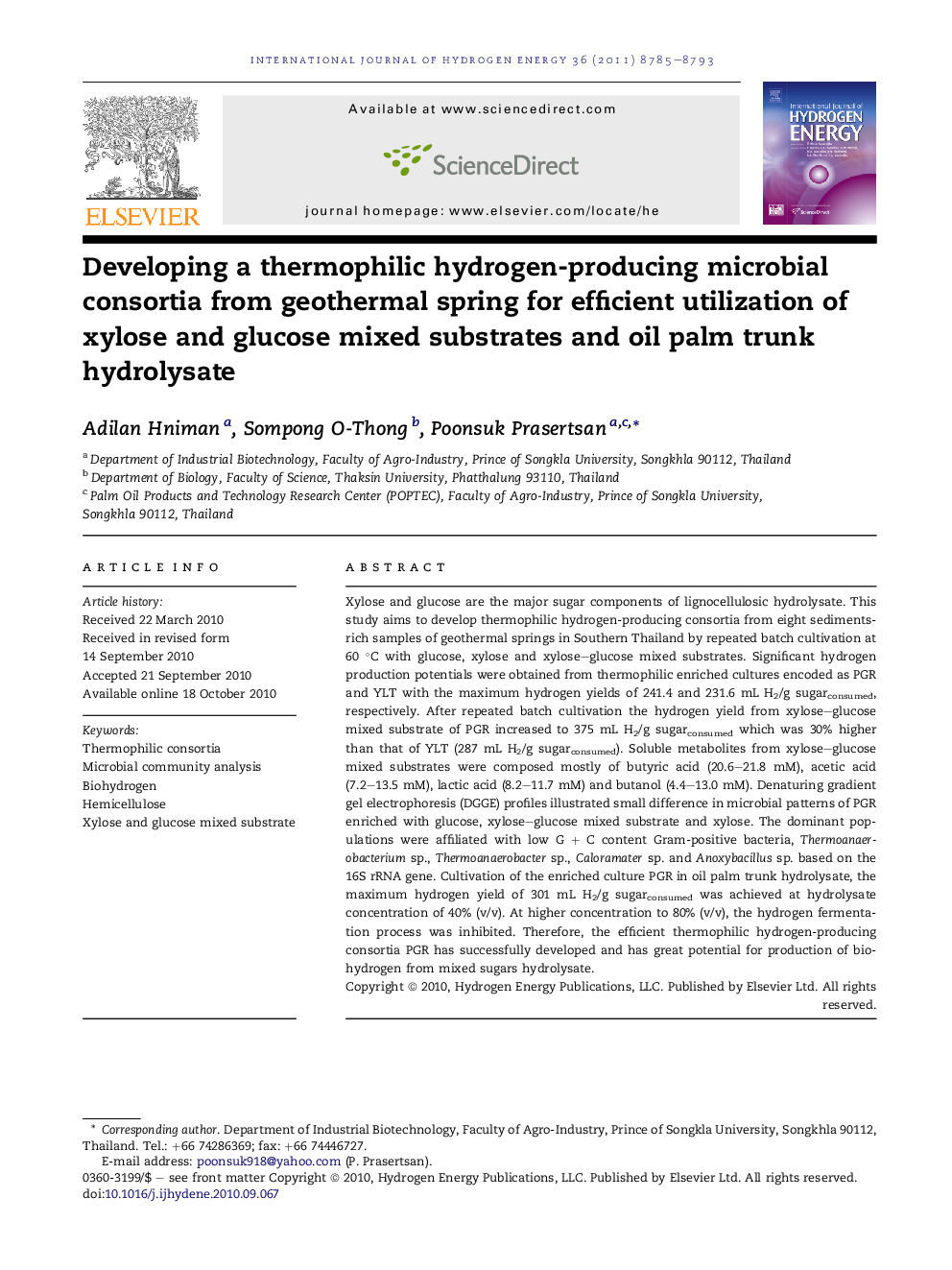| Article ID | Journal | Published Year | Pages | File Type |
|---|---|---|---|---|
| 1279201 | International Journal of Hydrogen Energy | 2011 | 9 Pages |
Xylose and glucose are the major sugar components of lignocellulosic hydrolysate. This study aims to develop thermophilic hydrogen-producing consortia from eight sediments-rich samples of geothermal springs in Southern Thailand by repeated batch cultivation at 60 °C with glucose, xylose and xylose–glucose mixed substrates. Significant hydrogen production potentials were obtained from thermophilic enriched cultures encoded as PGR and YLT with the maximum hydrogen yields of 241.4 and 231.6 mL H2/g sugarconsumed, respectively. After repeated batch cultivation the hydrogen yield from xylose–glucose mixed substrate of PGR increased to 375 mL H2/g sugarconsumed which was 30% higher than that of YLT (287 mL H2/g sugarconsumed). Soluble metabolites from xylose–glucose mixed substrates were composed mostly of butyric acid (20.6–21.8 mM), acetic acid (7.2–13.5 mM), lactic acid (8.2–11.7 mM) and butanol (4.4–13.0 mM). Denaturing gradient gel electrophoresis (DGGE) profiles illustrated small difference in microbial patterns of PGR enriched with glucose, xylose–glucose mixed substrate and xylose. The dominant populations were affiliated with low G + C content Gram-positive bacteria, Thermoanaerobacterium sp., Thermoanaerobacter sp., Caloramater sp. and Anoxybacillus sp. based on the 16S rRNA gene. Cultivation of the enriched culture PGR in oil palm trunk hydrolysate, the maximum hydrogen yield of 301 mL H2/g sugarconsumed was achieved at hydrolysate concentration of 40% (v/v). At higher concentration to 80% (v/v), the hydrogen fermentation process was inhibited. Therefore, the efficient thermophilic hydrogen-producing consortia PGR has successfully developed and has great potential for production of biohydrogen from mixed sugars hydrolysate.
